11 Mar Bustard Head Welcomes Solar Power
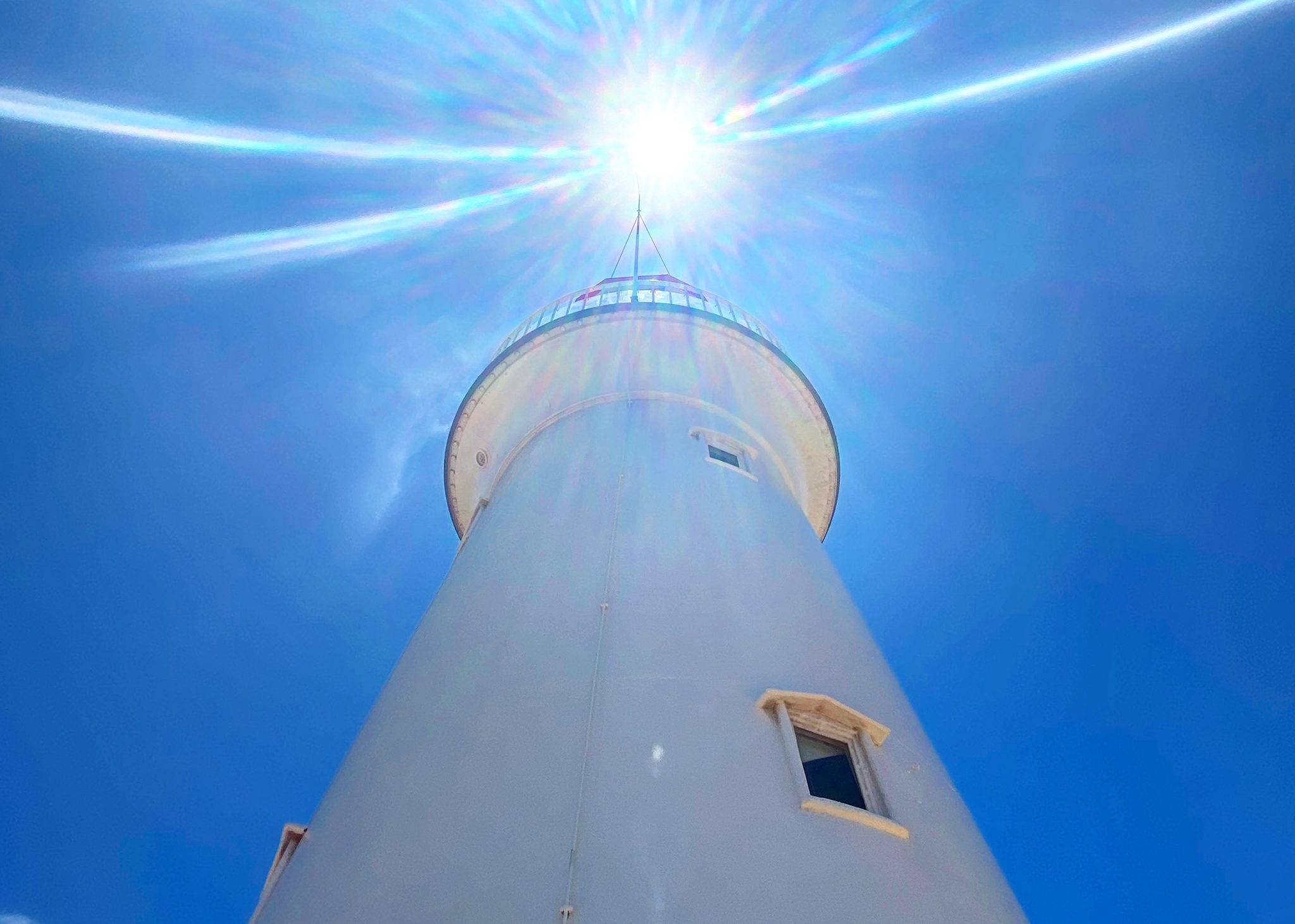
Flipping the switch
Bringing a 153 year old lightstation into the 21st century. 1770 LARC! Tours have recently finished assisting Ergon Energy with a special project at the Bustard Head Lightstation. Transitioning the power source from unreliable mains power to a “Stand-alone power system” (SAPS), a renewable solar powered set-up.
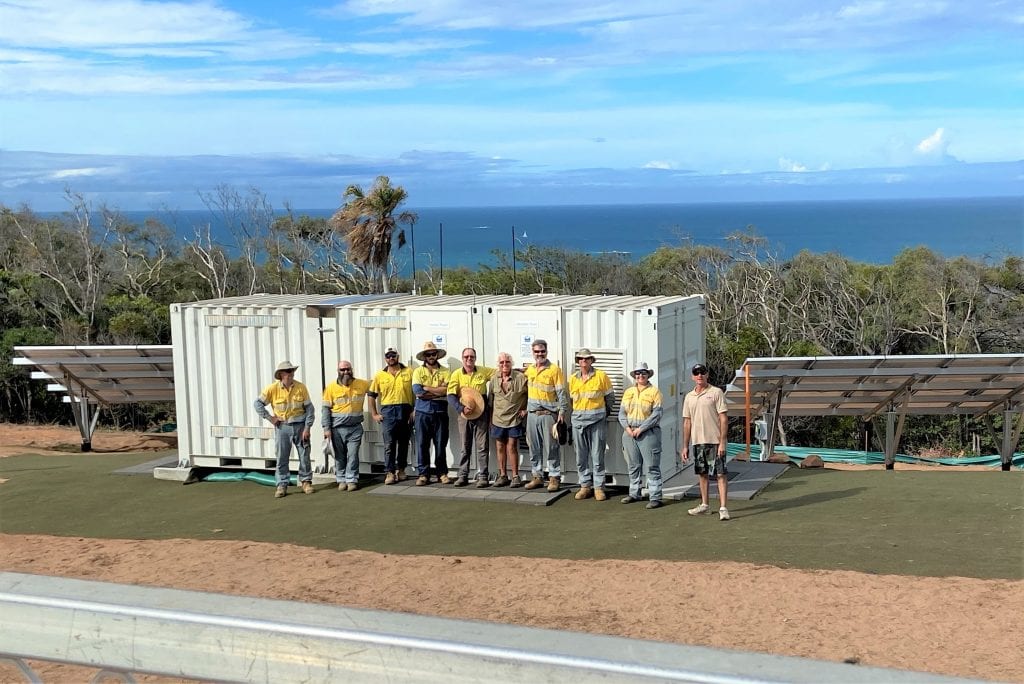
The Ergon Energy Team, Stuart Buchanan and LARCman Neil Mergard, standing in front of the completed solar system.
The History of Power
1868
– Bustard Head Lighthouse Association (BHLA) President and talented author Stuart Buchanan, in his book the Lighthouse of Tragedy, mentions “China oil” being initially used to fuel the lifesaving lamp. China oil was a nickname given to rapeseed oil, from being sourced from the Asian continent. (The Chinese have been using rapeseed oil for some 4000 years for lighting and cooking). Now more commonly known as canola oil.
1917
– The original illuminant was superseded by pressurised kerosene. This meant apparatus was converted from oil wick to incandescent kerosene vapour burner. The lamp was driven by a clockwork mechanism which had to be wound 70 cranks every 2 hours by the vigilant lightkeepers.
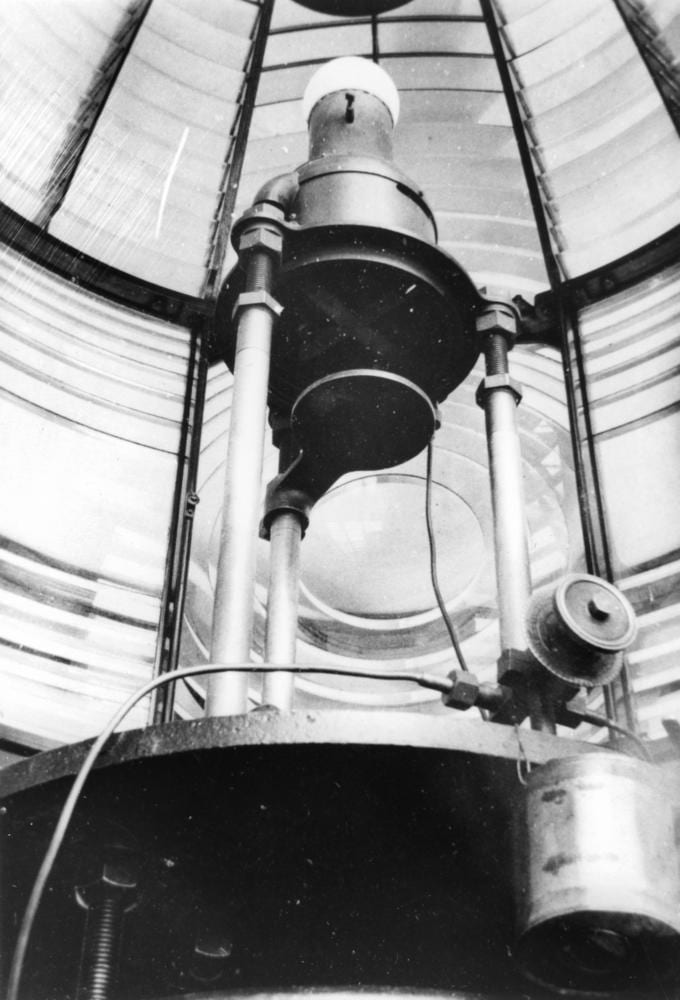
Installed in 1917 this kerosene burner replaced the original oil wick burner.
1935
– The original lens was removed to make way for a brighter and further reaching light. Kerosene was thrown out the door and a 110-volt electricity – petrol motor took charge. This generator charged several batteries to get the light through the night. The residents of the station during this time reported that this system was hideously noisy. They also had to wait for another 21 years before lighting was connected to the cottages.
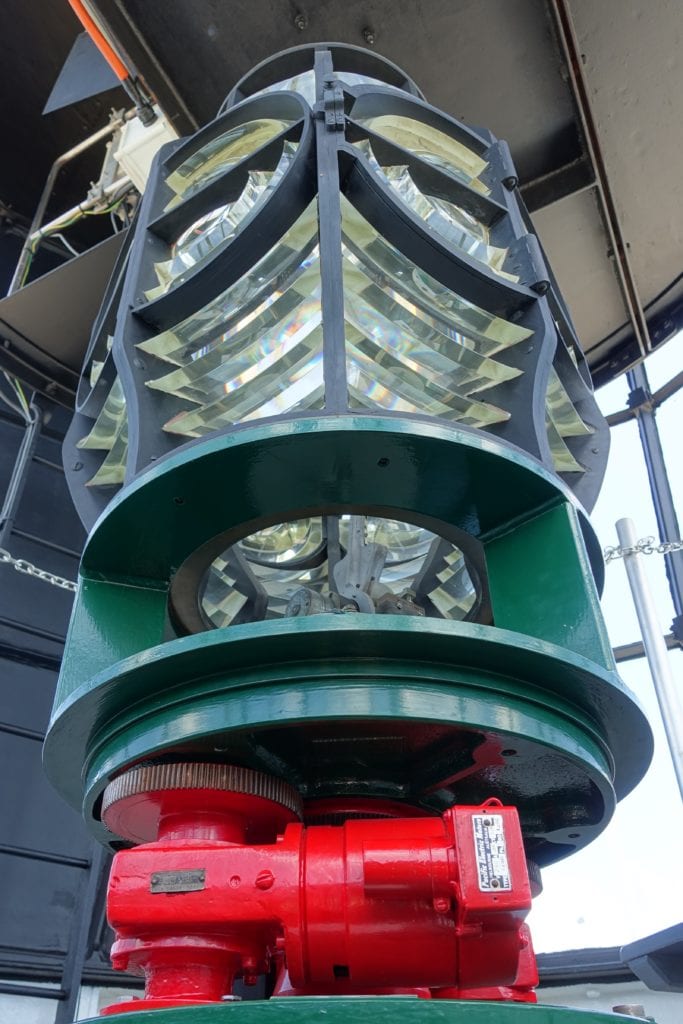
The AGA Fourth Order lens replaced the original Chance Brothers Second Order lens when the light was first electrified.
1965
– After WWII, when 4WD vehicles became more readily available they were used in replace of horses to transport stores. Additionally, amphibious vehicles such as the LARC (lighter amphibious re-supply cargo) allowed large fuel tanks to be installed at lightstations around Australia. Bulk fuel was transported in rubber bladders from a supply ships anchored offshore. Diesel-powered 240-volt electricity was connected at Bustard Head in 1965 not only to the light but the whole station. This enabled 24-hour electricity and resulted in a major boost to living conditions for staff and their families.
1986
– Bustard Head Lighthouse was connected to mains power and switched to automated operation. A Lister diesel generator remained in the engine room and was programmed to cut in the case of mains power failure. Bustard Head was destaffed and all personnel were withdrawn. This marks the start of the traumatising destruction caused by vandalism.
On the 1st February 2002 after a long drawn out battle, the BHLA received the approval to begin the labour-intensive restoration of the cottages, engine room, and grounds. Read the full heart felt story of the restoration in Stuart Buchanan’s book “Light of their Lives”.
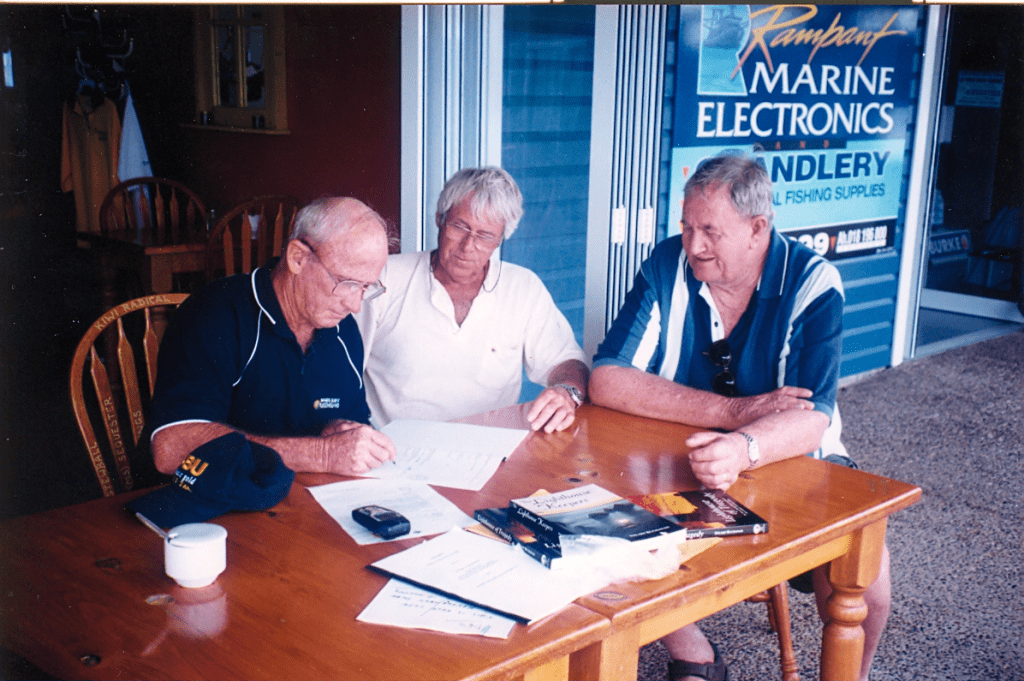
2002 – Des Mergard and Stuart Buchanan signing the official approval documentation, ready to start with the long project ahead.
2007
– The glass lens of the light was changed to a Vega VRB25 lens, nicknamed “Tupperware lens” due to its plastic like construction material. The back up diesel generator was taken away and replaced with a bank of batteries that stored mains power and could run the light for 3 nights in the case of mains failure.
2021
– Due to the remote location and difficult terrain surrounding Bustard Head, the lightstation was nominated by Ergon Energy to trial a Stand-alone power system (SAPS). The existing line runs through Eurimbula National Park where the terrain is impassable more often than not. The newly installed solar system is completely off grid and charges battery banks that hold enough power to last three days. The three days include full functionality of the lighthouse light as well as the cottage facilities. As this system is still in trial mode a diesel generator has been installed as a back up in the case of malfunction of the system.
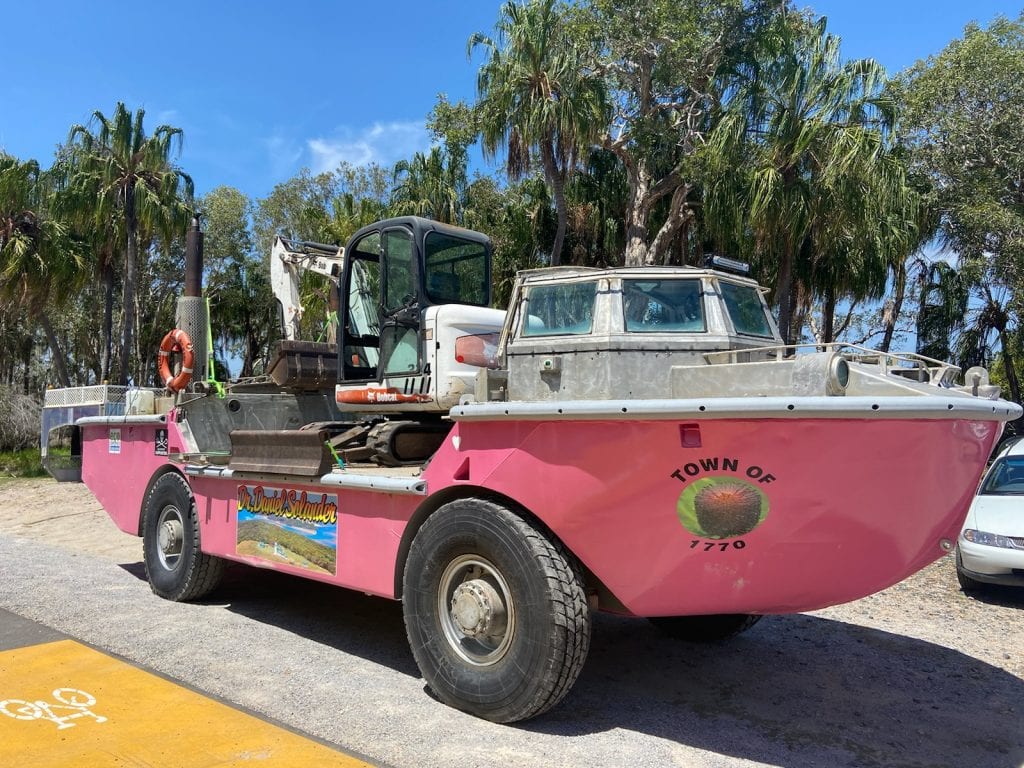
Due to the multiple terrains encountered on the way to Bustard Head Lightstation, there is only one type of transport suitable for the task of transporting equipment, supplies and personnel. The passenger carrying LARCs make a few minor adjustments to morph back into their original purpose of a cargo carrier.
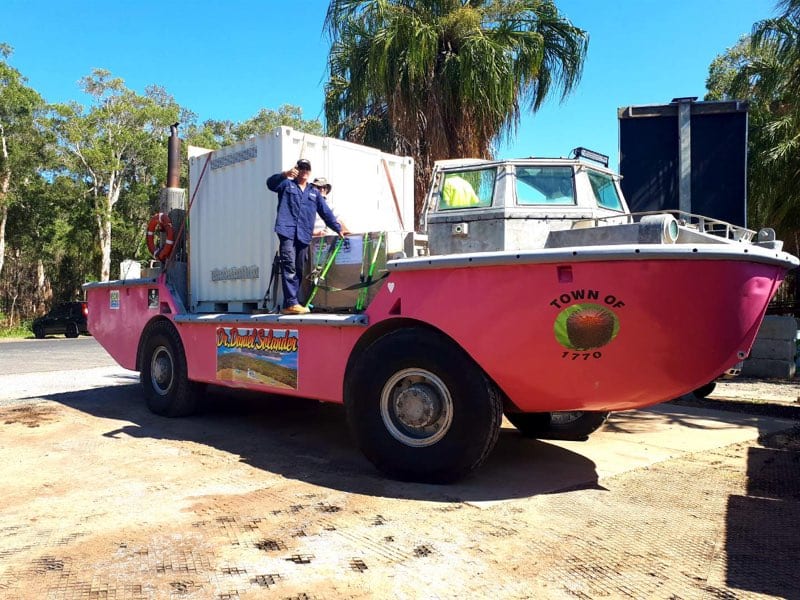
Dreams are Free
Time travelling to 2068
– 200 year old Bustard Head Lightstation now runs on the energy of photosynthesis produced by living gardens planted on the cottages roofs and surrounding grounds. Harbouring this power has led to removing the negative environmental impact whilst producing cleaner air and natural habitat for wildlife.
We do not know what’s next, but it can only get better from here.


No Comments